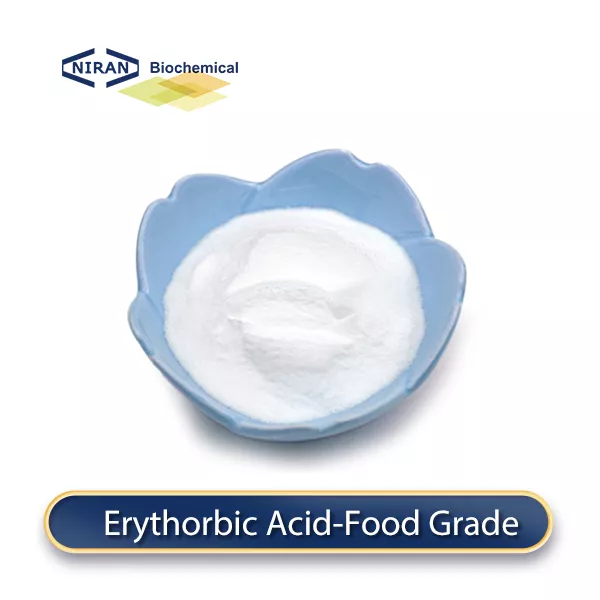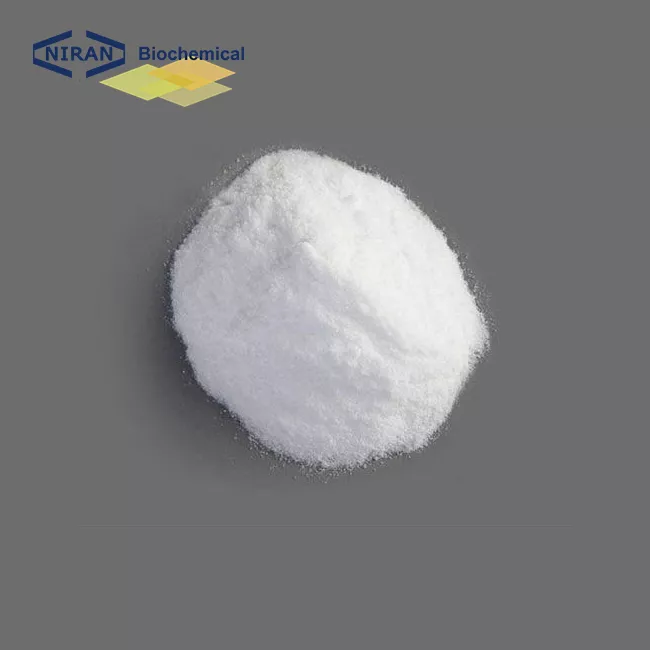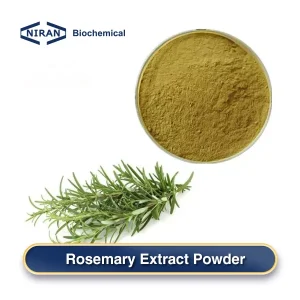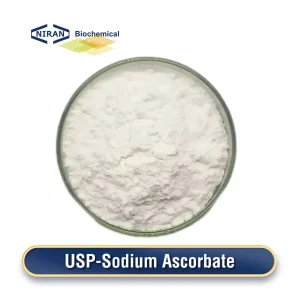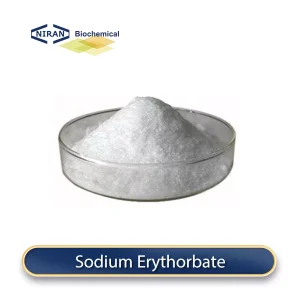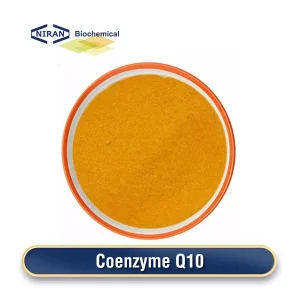Niran Biochemical
YOUR RELIABLE FOOD INGREDIENTS
Send Inquiry
Home » Products » Antioxidants » Erythorbic Acid-Food Grade
Erythorbic Acid-Food Grade
- CAS: 89-65-6
- Chemical Formula: C6H8O6
- Certification: KOSHER, ISO, HALAL, FSSC22000, BRC, etc.
- Standard:
- MOQ: 1000KG
- Shelf Life: 2 Years
Inquire Product
Product Description
What is Erythorbic Acid?
Erythorbic acid is a stereoisomer, similar to vitamin C in chemical properties. It appears as a white crystalline powder. It is quite stable in the air when dry and is widely used in meat products.
There are two main preparation processes for erythorbic acid:
1. Using corn starch as raw material, it is fermented into glucose and then made into methly2-ketogluconate. Sodium isoascorbate is obtained by treatment with sodium methoxide, and then desalted by ion exchange resin to obtain isoascorbic acid. It is also the mainstream preparation process in China.
2. Using specific microorganisms to aerate glucose or starch to obtain α-ketogluconate calcium, then using methanol and sulfuric acid to form methyl ester, and then adding methanol sodium hydroxide solution for enolization reaction to obtain erythorbic acid.
Related parameters:
| Items | Standards |
| Identification | A &B |
| Content | 98.0% – 100.5% |
| Specific Rotation | -16.5 ~ -18.0 |
| Loss on drying(%) | 0.08% |
| GMO | Free |
| Residue on | 0.3%MAX |
| Heavy Metal(Pb) | 10 PPM MAX |
| Lead | 2 PPM MAX |
| Arsenic | 3 PPM MAX |
| Odor | None peculiar smell |
| Mesh size | 100% Thru.40Mesh |
Recommended dosage:
| Food name | Maximum usage(g/kg) |
| Juice drinks | 0.1-0.2 g/kg |
| Canned food | 0.1-0.2 g/kg |
| Sauces | 0.1-0.2 g/kg |
| Meat products | 0.1-0.2 g/kg |
| Bakery | 0.05-0.1 g/kg |
| Biscuits | 0.05-0.1 g/kg |
| Chocolate | 0.05-0.1 g/kg |
| Candy | 0.05-0.1 g/kg |
| Protein powder | 0.05-0.1 g/kg |
| Frozen fruit | 0.05-0.1 g/kg |
| Flavored drinks | 0.1-0.2 g/kg |
Erythorbic Acid has a wide range of uses
Erythorbic Acid can effectively neutralize free radicals and prevent the oxidation of fats and oils in food, thereby extending the shelf life of food and maintaining its color and flavor. By reducing the oxidation of phenolic compounds, Erythorbic Acid can prevent food from browning and maintain the appearance and quality of food.
During food processing, Erythorbic Acid can improve food stability, prevent ingredient degradation, and maintain product quality. By reducing oxidation reactions, Erythorbic Acid can help maintain the original flavor of food and prevent flavor changes caused by oxidation.
User asked question:
Q: What are the differences and advantages of erythorbic acid compared to vitamin C?
A: The body uses vitamin C, which is the active form of ascorbic acid, primarily as a nutrition and to support numerous physiological processes like iron absorption and collagen formation. It has an important antioxidant effect in the body, supports the immune system and promotes wound healing. Erythorbic acid is an isomer of vitamin C and is mainly used as a food additive. Its function is focused on preventing food oxidation and browning. It performs well as an antioxidant in food processing, but its nutritional function is relatively weak.
Advantages:
1. In food processing and storage, erythorbic acid shows high stability and is not easily degraded by heat, light and oxygen, which makes it more effective in extending the shelf life of food and maintaining flavor. In contrast, vitamin C is more easily degraded under these conditions, so its stability in food is poor.
2. Erythorbic acid is widely utilized in the food sector, including meat products, canned foods, juices, and drinks, because of its high stability. It efficiently extends the shelf life of food and maintains the quality and flavor of the final product. Isorecorbic acid reduces losses during long-term storage and processing and generally has better economic benefits. However, vitamin C is mainly used for nutritional supplements and health support, and its economy and stability are not as good as isorecorbic acid in food industry applications.

